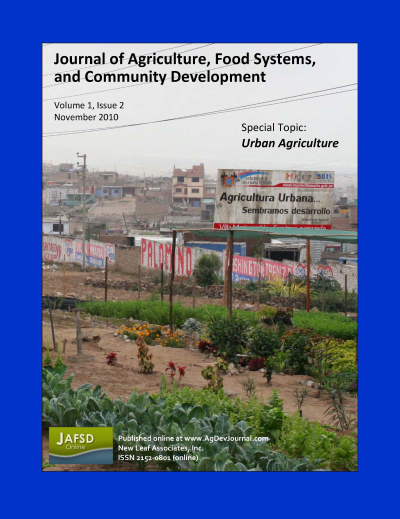In This Issue: Frontiers in Urban and Peri-Urban Agriculture
DOI:
https://doi.org/10.5304/jafscd.2010.012.016
Keywords:
Urban Agriculture, Race, Identity, Strategy, Practitioner ReflectionAbstract
First paragraph:
Introduction to Urban Agriculture
The special topic focus of JAFSCD volume 1, issue 2, is urban and peri-urban agriculture. While urban and peri-urban agriculture are common and often traditional aspects of food systems in the Global South, they are now on the rise in industrial countries as well, especially among ethnic immigrant groups in North America and Europe. The Food and Agriculture Organization (FAO) of the United Nations defines urban agriculture as “an industry that produces, processes and markets food and fuel, largely in response to the daily demand of consumers within a town, city, or metropolis, on land and water dispersed throughout the urban and peri-urban area, applying intensive production methods, using and reusing natural resources and urban wastes to yield a diversity of crops and livestock.”[1] The findings of national censuses, household surveys, and research projects suggest that up to two-thirds of urban and peri-urban households around the world are involved in agriculture. Much of the food produced is for their own consumption, with occasional surpluses sold to local markets.[2]
Metrics

Downloads
Published
How to Cite
Issue
Section
License
The copyright to all content published in JAFSCD belongs to the author(s). It is licensed as CC BY 4.0. This license determines how you may reprint, copy, distribute, or otherwise share JAFSCD content.












